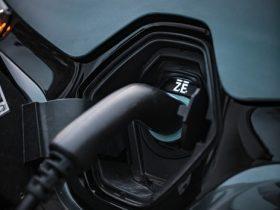Electric vehicles. Self-driving vehicles. Low-maintenance vehicles. A drop-off in personal vehicle ownership. These are all things that are happening and are predicted to grow in the next decade. It makes your head spin as you consider future staffing, equipment investment, market and business focus, service delivery and more
Like all matters of future technology, one can be easily overwhelmed when attempting to stay informed and sorting through the many opinions and forecasts. However, a few experts have offered some clarity on these future mobility trends.
If you need more proof that it’s time to focus on EVs and how to service them, just look to the leading automakers.
As you know, the auto industry is shifting away from internal combustion technology. Most manufacturers – among them, GM, Ford, Volkswagen and Nissan – have released goals on both investment and production for battery-powered, emissions-free vehicles. GM, for one, said it will deliver more than a million EVs globally by 2025 and make its factories carbon neutral by 2040.
The Biden Administration has set an agenda for the U.S. to move away from fossil fuels, including an executive order in August that mandates at least half of the nation’s vehicles sold in 2030 to be electric. Some automakers are already leading the way. Tesla said it expects to sell about 800,000 electric cars this year around the world.
Of course, there are nay-sayers. Currently, less than 4 percent of the cars sold in the U.S. (at least in June this year) were electric. The primary barriers seem to be logistics (charging stations) and costs, along with the psychological aspect of changing the thinking of most personal car owners.
EV sales grew around the world in 2020 while the rest of the car market struggled, much of it due to COVID. For longer-term growth projections, consider that the number of battery-powered and hybrid automobiles should jump from about 5 million now to 140 million by 2030, according to the International Energy Agency.
Beyond the EVs already here, what other future mobility trends do we need to both acknowledge and prepare for?
Consider these nuggets from McKinsey, a respected business management consultant: Shared mobility is an industry that could double in size by 2030. It also estimates that the automotive software market will have grown by 250 percent by the end of this decade. This will put software at the center of new automobile designs.
Also, think about sustainability. Consumers who factor sustainability into their buying decisions helped drive EV sales up 43 percent in 2020. By 2035, more than 95 percent of all cars and trucks on the road need to be zero-emission vehicles to reach the global climate targets that have been set.
Read about the trends in China and expect them to come to the US. For example, Chinese automakers have tapped into advanced technologies to deliver a customer journey that is friendly and convenient. They have improved EV charging and parking, and have added valet service that picks up EVs during work hours, drives them to charging stations, then returns them to their parking spots before the commute home.
It may well be that the differentiating feature in the car of the future will be its ability to mimic the conveniences we’ve come to expect from our smartphones.
How about staffing for the future vehicle market? As if you don’t have enough staffing challenges now. Over the next decade, the skill sets of traditional automakers and suppliers will need to shift dramatically. This could have a huge effect on independent automotive shops and their workforce. The rising importance of in-vehicle software and connected/autonomous cars increases the need for digital talent. As consumers become increasingly comfortable buying everything online, existing dealer networks could shift their focus to maintenance – thus creating even stiffer competition for independent repair shops.
Bottom line? The time is now – or better yet, yesterday – to begin planning for the changes related to future mobility. Are you ready?
Link: https://www.tirereview.com/big-picture-trends-in-todays-mobility-landscape/
Source: https://www.tirereview.com
















Leave a Reply